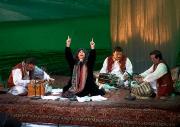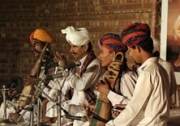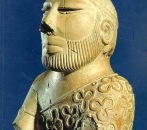 |
 |
 |
Around 3000BC, the inhabitants of ancient Sindh were believed to be aboriginal tribes speaking languages of the great Indus Valley civilization. The Indus Valley Civilization went into decline around the year 1700BC for reasons that are not entirely known, though its downfall was probably precipitated byCentral Asia. The Indo-Aryans are believed to have founded the Vedic civilization which around 1500BC, which helped shape subsequent cultures in South Asia.
Because of the strategic location at the western edge of South Asia, Sindh has always been exposed to the entry of migrants from Central Asia and the Middle East. It was also one of the earliest regions to be influenced by Islam and thusSindh earned the name of “Bab ul Islam”, the gateway of Islam into India. It was part of the Islamic empires of the Abbasids and Umayyids. Sufi missionaries played a pivotal role in converting millions of native Sindhis to Islam. At the same time, Muslim technocrats, bureaucrats, soldiers, traders, scientists, architects, teachers, theologians and Sufis flocked from the rest of the Muslim world to the Islamic Sultanate in Sindh. Many races like Turks, Pashtuns, Mughals,Habbari, Soomra, Samma, Arghun, Baloch tribes migrated and settled in Sindh.
Some famous historic figures of Sindare Jhulelaj, Shah Abdul LatifBhittai,Raja Dahir · Jam Nizamuddin II · Mian Adam Shah Kalhoro · General Hosh Mohammad Sheedi · Sibghatullah Shah Rashidi · MolanaUbaidullah Sindhi · Abdullah Shah Ghazi · Mir Sher Muhammad Talpur · Dodo Bin KhafefSoomro IIIs
Some famous figures of Modern History of Sindh are G. M. Syed · Zulfiqar Ali Bhutto · HyderBuxJatoi · Bashir Qureshi · QadirMagsi · RasulBuxPalejo · Mumtaz Bhutto · SafdarSarki · ZarinaBaloch · Muhammad Ibrahim Joyo · Benazir Bhutto · Asif Ali Zardari.
Today people from various religions like Islam, Zoroastrianism, Hinduism, Sikhism, Christianity & ethnicities like Sindhi, Balochi, Siraiki, Muhajir, Punjabi, Pathan & many more reside in Sindh.
 |
 |
 |